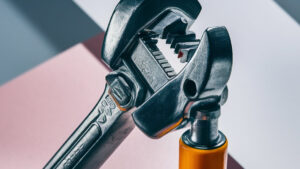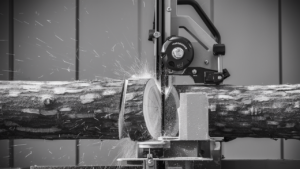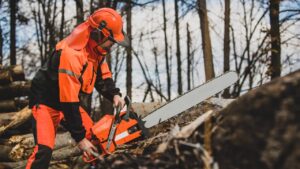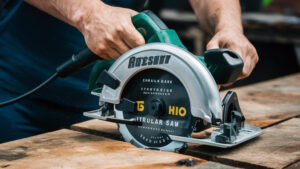The rise of home-based entrepreneurship is transforming how we earn with affordable machines making it easier to start lucrative ventures from your living room. The global market for personalized and eco-friendly products is booming, driven by consumer demand for unique, sustainable goods. These five Amazon machines—ranging from $300 to $2,500—enable you to tap into high-growth industries like custom apparel, gourmet snacks, artisanal soaps, stickers, and engraved crafts. Perfect for beginners, they offer low startup costs and high profit margins, ideal for side hustlers or full-time entrepreneurs.
Recommended Best Home Business Machines 2025-2026
| Business Ideas | Machines Link |
| Embroidered Apparel Business | Brother SE700 Sewing and Embroidery Machine |
| Flavored Nut Business | DYVEE Peanut Roaster For Home Use |
| Custom Sticker Business | Liene PixCut S1 Color Sticker Printer & Cutting Machine |
| Homemade Soap Business | PIUH Deluxe Soap Making Kit |
| Laser Craft Business | xTool F1 2-in-1 Dual Laser Engraver |
With e-commerce platforms like Shopify, Etsy, and Amazon FBA, plus social media marketing, you can reach global customers effortlessly. This comprehensive guide dives into each machine, detailing why to start, future potential, sales strategies, investment, profits, and production steps. We’ve also included tips, FAQs, and resources for video tutorials to help you succeed. Let’s unlock your home-based business empire!
Embroidery Machine for Custom Apparel Business ($1,500)
Why Start This Business and Future Outlook
Embroidery machines are a smart choice for launching a home business due to their versatility and the rising popularity of personalized clothing. The market for custom apparel is expected to expand significantly in 2025, driven by consumer preferences for unique items in fashion, events, and branding. This business offers high profit margins since embroidered products can be sold at 3-5 times the material cost, making it accessible for beginners with creative flair. The future is promising, with e-commerce growth and trends like eco-friendly fabrics increasing demand. Starting now positions you to capitalize on holiday seasons and corporate gifting, potentially building a scalable operation from home without needing a large inventory.
Materials Needed for This Business
To kick off your embroidery business, gather essential materials that keep costs low while ensuring quality output. You’ll need blank apparel items like T-shirts, hats, and tote bags, sourced affordably from wholesalers such as SanMar or Amazon in bulk packs for $5–$10 each. Embroidery thread in various colors, stabilizers for fabric support, and needles are crucial—buy thread spools from Amazon for $20–$50 per set. Design software like Hatch Embroidery Digitizer ($100 one-time fee) or free alternatives like Ink/Stitch will help create patterns. Packaging supplies, including poly bags and labels, cost around $50 initially. Opt for sustainable materials like organic cotton blanks to appeal to eco-conscious buyers, enhancing your brand’s marketability.
How to Operate and Make Products
Operating an embroidery machine is straightforward with practice, turning simple fabrics into premium products. Begin by installing the $1,500 Brother SE600 machine from Amazon.com, connecting it to your computer via USB for design uploads. Step-by-step: Select a design, hoop the fabric with stabilizer, thread the machine (up to 6 colors), and press start—the touchscreen guides you through settings. For products like monogrammed hoodies, position the hoop on the chest area and embroider names or logos in 10–15 minutes. Create logoed caps by adjusting the hoop for curved surfaces, or personalized tote bags with motivational quotes. Experiment with thread types for glossy effects. Always test on scraps to avoid errors, and clean the machine weekly for longevity
How and Where to Sell
Selling embroidered apparel is seamless with multiple channels to reach customers. Price items at $15–$30 each, focusing on customization to stand out. Use Etsy for handmade sales, listing with detailed photos and options for personalization. Shopify stores allow direct e-commerce with integrated payments, ideal for scaling. Local craft fairs or pop-up markets provide in-person exposure, charging $20–$50 per booth. Amazon FBA handles fulfillment for broader reach, though competition is higher—start with niche items like baby onesies. Offer bundles, such as family matching sets, to boost average order value. Track inventory with tools like Google Sheets, and provide fast shipping to build reviews. This multi-channel approach maximizes visibility and sales potential.
Marketing Plan
Effective marketing turns your embroidery business into a brand powerhouse. Leverage social media by posting time-lapse videos on TikTok and Instagram Reels, using hashtags like #CustomApparel2025 and #EmbroideryArt to gain organic reach—aim for 3–5 posts weekly. Run targeted ads on Etsy ($0.20 per click) focusing on wedding planners or sports teams. Collaborate with influencers in fashion niches for shoutouts, offering free samples. Email marketing via Mailchimp (free for starters) nurtures repeat customers with newsletters on new designs. Join Facebook groups for crafters to network and share tips. SEO-optimize your Shopify site with keywords like “personalized embroidered hats” for Google traffic. Track analytics to refine strategies, ensuring consistent branding across platforms for long-term growth.
Investment and Profit Estimate
The initial investment for an embroidery business is modest, totaling around $1,700. The core is the $1,500 machine, plus $200 for threads, stabilizers, and initial fabric blanks. Ongoing costs like electricity and maintenance add $50 monthly. Profit estimates are strong: Produce 20–50 items daily, selling at $15–$30 each with a 70% margin after materials ($3–$5 per item). This yields $200–$800 daily, or $6,000–$24,000 monthly at full capacity. Break-even occurs within 1–2 months with consistent sales. Scale by adding designs or outsourcing fulfillment. Focus on high-demand seasons like holidays for boosts. With low overhead, this business offers excellent ROI for home entrepreneurs.
Tips for Success
Success in embroidery requires strategy and creativity. Practice designs to build speed and quality, avoiding common errors like thread breaks by using high-quality supplies. Differentiate with eco-friendly threads and custom services, such as rush orders for events. Build a portfolio website to showcase work, linking to sales platforms. Network in online communities like Reddit’s r/Embroidery for feedback. Monitor trends like sustainable fashion to update offerings. Customer service is key—offer refunds for defects to earn positive reviews. Automate with software for repeat orders. Budget for marketing ($100 monthly) to grow visibility. Stay organized with inventory apps. With persistence, turn this into a $50,000+ annual income source.
Nut Roasting Machine for Gourmet Snack Business ($500)
Why Start This Business and Future Outlook
Launching a gourmet snack business with a nut roasting machine is ideal for food enthusiasts, offering easy entry and repeat sales. The healthy snack sector is expanding, with consumers favoring nutrient-rich nuts over sugary treats. In 2025, expect continued growth as wellness trends like keto diets push demand higher. This business provides high margins—roasted nuts cost little to produce but sell at premium prices. The future is optimistic, with online sales and subscription models making it scalable from home. It’s low-risk, requiring minimal space and no prior experience, perfect for turning a hobby into income.
Materials Needed for This Business
Gather simple materials to start roasting nuts at home. Bulk nuts like almonds or cashews from Costco or Amazon ($5–$10 per pound). Flavorings such as spices, honey, or salt from grocery stores ($20–$50 initial stock). Packaging bags or jars for branding, available on Amazon for $50. Oil for coating nuts, like coconut or olive ($10 bottle). Labels for product info, printed at home or ordered ($20). Eco-friendly options like biodegradable bags appeal to health buyers. Total starter kit under $200, keeping costs low for high-volume production.
How to Operate and Make Products
Operating a nut roasting machine is straightforward for home use. Preheat the $500 Amazon machine to 350°F, add nuts with light oil, season, and roast for 10–15 minutes while stirring. Cool and package immediately. Create gourmet products like chili-roasted peanuts or cinnamon pecans. Experiment with mixes for trail snacks. Always use fresh nuts to maintain quality. Watch our video guide for detailed steps on honey-roasted almonds (link in resources). This process takes 20–30 minutes per batch, allowing 50–100 pounds daily. Clean the machine after use to prevent residue buildup.
How and Where to Sell
Sell your roasted nuts through diverse channels to maximize reach. Price bags at $5–$8, focusing on unique flavors. Amazon FBA for national distribution, handling shipping. Etsy for handmade appeal, listing with photos. Local farmers’ markets or health stores for direct sales. Subscription boxes on your website for recurring revenue. Offer sample packs to encourage trials. Use clear labeling for allergens. This approach builds a loyal customer base quickly.
Marketing Plan
Market your nut snacks effectively to stand out in 2025. Share roasting videos on Instagram and TikTok with #GourmetNuts2025, attracting 10,000+ views. Run Facebook ads targeting fitness groups ($50 budget). Partner with influencers for reviews, sending free samples. Email newsletters via Mailchimp highlight new flavors. SEO your website with keywords like “flavored roasted nuts home business.” Attend local events for tastings. Track engagement to refine tactics, aiming for 20% conversion from social media.
Investment and Profit Estimate
Invest minimally for big returns in nut roasting. The machine costs $500, plus $200 for initial nuts and spices. Monthly expenses like packaging add $100. Profit estimates: Roast 50–100 pounds daily, selling at $5–$8 per pound with a 60% margin. Earn $150–$400 daily, or $4,500–$12,000 monthly. Break-even in weeks with steady sales. Scale by adding varieties or wholesale.
Tips for Success
Succeed by focusing on quality and innovation. Test flavors with small batches to find winners. Obtain food handling certifications for credibility. Package attractively with custom labels. Network in health communities for partnerships. Monitor trends like low-carb nuts. Avoid spoilage by storing in cool places. Use apps for inventory tracking. With consistent marketing, grow to $40,000+ annually.
Soap Extruder Machine for Artisanal Soap Business ($300)
Why Start This Business and Future Outlook
Artisanal soap making is a rewarding home business, capitalizing on the shift to natural personal care. Consumers prefer chemical-free soaps, boosting the market in 2025. Start for its low overhead and artistic expression—custom soaps sell well with minimal effort. The future is positive, with eco-trends and online sales expanding opportunities. This business allows flexibility, ideal for home setups.
Materials Needed for This Business
Essential materials include soap base, lye, essential oils, and molds—source from Amazon or Bramble Berry ($50–$100 initial). Colors and fragrances like lavender add variety ($30). Packaging wrappers and labels for branding ($20). Gloves and goggles for safety ($20). Choose organic ingredients for premium appeal. Total under $200 to start producing unique soaps efficiently.
How to Operate and Make Products
Operate the extruder by melting soap base, adding scents, extruding into shapes, and curing. For detox bars, mix charcoal; for scrubs, add oats. The $300 machine handles batches quickly. Watch our video for vegan soap steps (link in resources). Produce 100–200 bars daily with practice. Always ventilate and wear protection.
How and Where to Sell
Price soaps at $5–$8, selling on Etsy for handmade buyers or Shopify for custom orders. Local fairs or wellness stores for direct sales. Bundles increase value. Use attractive photos and descriptions. This strategy reaches diverse customers effectively.
Marketing Plan
Promote with TikTok demos tagged #ArtisanSoap2025, gaining views fast. Use Instagram for story highlights. Run Etsy ads targeting beauty lovers. Email lists for promotions. Collaborate with bloggers for reviews. SEO your site with “natural homemade soap business” keywords. Track metrics to optimize.
Investment and Profit Estimate
Invest $300 in the machine, $150 in materials. Monthly costs $100 for supplies. Profit: 100–200 bars daily at $5–$8, earning $300–$800 (70% margin), $9,000+ monthly. Quick ROI with sales growth.
Tips for Success
Focus on unique recipes and packaging. Test for safety. Build a brand story around natural ingredients. Network in craft groups. Update with seasonal scents. Avoid over-mixing bases. Use tools for efficiency. Grow to $50,000+ annually with dedication.
Custom Sticker & Label Printer for Event & Branding Supply Business ($400)
Why Start This Business and Future Outlook
Custom stickers are a fun, low-cost business in the growing branding market. Start for its quick production and endless creativity—event planners love personalized items. The future is strong, with e-commerce boosting sales in 2025. This home setup offers flexibility and scalability.
Materials Needed for This Business
Sticker paper, ink cartridges, and design software—buy from Amazon ($50–$100). Vinyl for durable labels ($30). Cutting tools like mats ($20). Total starter pack under $200. Choose glossy or matte for variety.
How to Operate and Make Products
Print designs on sticker paper, cut shapes. For party labels, use Canva templates. The $400 printer handles high-quality output. Watch our video for cafe logos (link in resources). Produce 200–500 daily with ease.
How and Where to Sell
Sell on Etsy for custom orders or Shopify for bulk. Local cafes for branding supplies. Price $0.50–$1 each. Bundles for events. This mix ensures steady income.
Marketing Plan
Share tutorials on Instagram with #StickerBusiness2025. Use Facebook for event groups. Etsy ads for targeted reach. Email newsletters for repeats. SEO site with “custom event stickers.” Track for adjustments.
Investment and Profit Estimate
$400 printer, $100 materials. Monthly $50 for ink. Profit: 200–500 stickers daily, earning $80–$400 (70% margin), $2,400+ monthly. Fast returns with volume.
Tips for Success
Use high-quality paper for durability. Offer designs for niches. Join online craft communities. Update with trends. Avoid low-ink prints. Scale with helpers. Aim for $30,000+ yearly.
Laser Engraving Machine for Personalized Craft Business ($2,500)
Why Start This Business and Future Outlook
Laser engraving is a high-tech home business for personalized gifts. Start for its premium pricing and uniqueness—custom items sell well. The future is solid, with gifting trends rising in 2025. This setup promises growth.
Materials Needed for This Business
Wood blanks, acrylic sheets, leather—source from Amazon ($100–$200). Safety gear like goggles ($50). Software subscription ($50). Total under $300 for starting stock.
How to Operate and Make Products
Design in software, load material, engrave. For keychains, adjust settings for depth. The $2,500 machine is precise. Watch our video for signs (link in resources). Produce 20–50 items daily.
How and Where to Sell
Sell on Etsy for crafts or Shopify for custom. Fairs for local. Price $10–$20. Focus on personalization.
Marketing Plan
Post videos on TikTok with #LaserCraft2025. Use Pinterest for ideas. Shopify ads for gifts. Influencer partnerships. SEO with “personalized engraved gifts.”
Investment and Profit Estimate
$2,500 machine, $200 materials. Monthly $100 maintenance. Profit: 20–50 items daily, earning $150–$600 (70% margin), $4,500+ monthly.
Tips for Success
Test materials first. Offer engraving services. Join maker communities. Maintain laser cleanliness. Follow safety protocols. Scale with advanced models. Target $40,000+ annually.
Essential Tips for Launching Your Home-Based Machine Business
Building a home business with machines demands careful planning. Secure licenses and check zoning. Source quality materials bulk. Dedicate workspace with safety measures. Learn operations through videos. Market consistently on social media. Track finances with apps. Avoid common errors like poor quality. Scale by diversifying products. Focus on trends like sustainability. Network online for support. With effort, achieve $50,000+ yearly income.
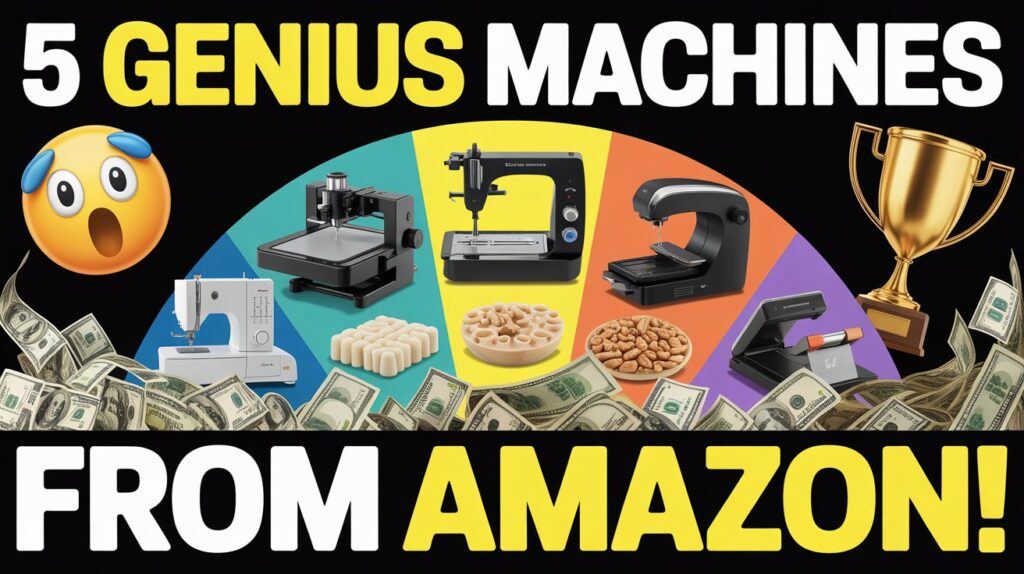
FAQs for Amazon Machines to Launch Profitable Home Businesses
Q1: How to select a machine?
Match to skills—creative for engraving, food for roasting. Check Amazon reviews, budget $300–$2,500.
Q2: Profit potential?
Daily $80–$800, with margins 60–70%. Scale for $30,000+ yearly.
Q3: Legal needs?
Business registration, FDA for food. Insurance recommended.
Q4: Learning curve?
Use tutorials, practice small. Communities help.
Q5: Material sourcing?
Amazon, wholesalers for discounts.
Q6: Marketing tips?
Social media, ads, influencers.
Q7: Scaling methods?
Automate, hire, expand lines.
Q8: Common mistakes?
Skipping quality checks, poor marketing.
Q9: Part-time viability?
Yes, 2–4 hours daily for $100+.
Q10: More resources?
YouTube channels, forums, business books.
Conclusion
These five Amazon Machines to Launch Profitable Home Businesses from apparel to crafts. Low investments ($300–$2,500) and daily profits ($80–$800) make them accessible. Embrace marketing and trends for success. Start today—your home could be a profit center. Explore resources for guides and begin your journey!

